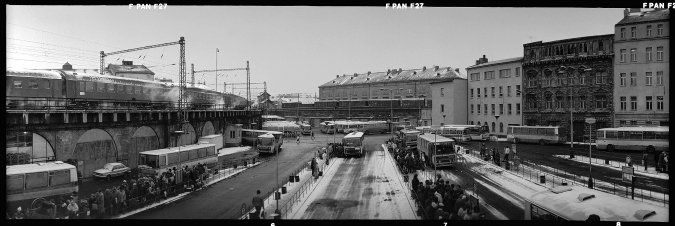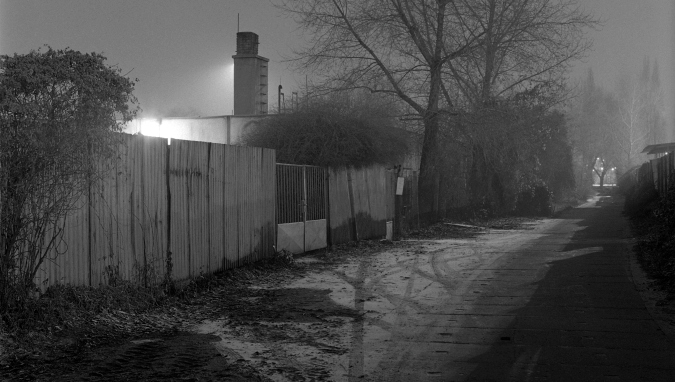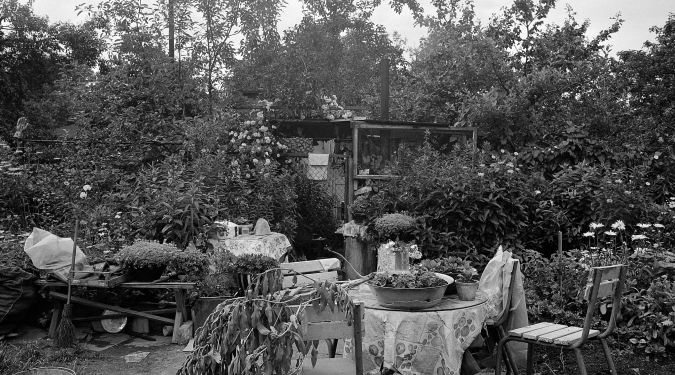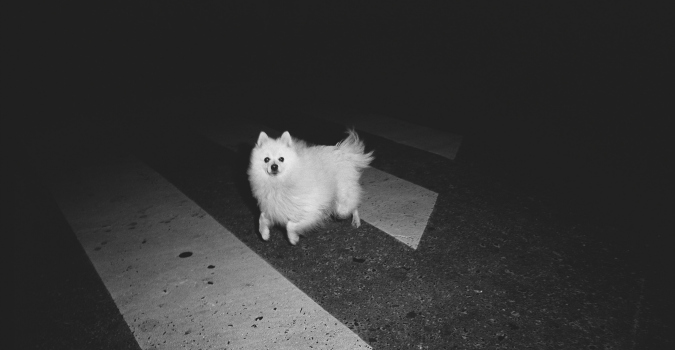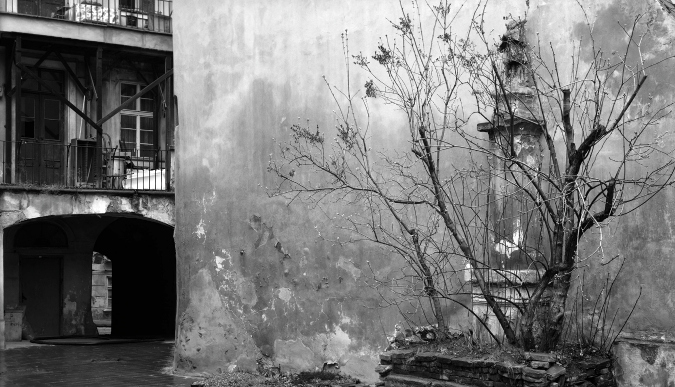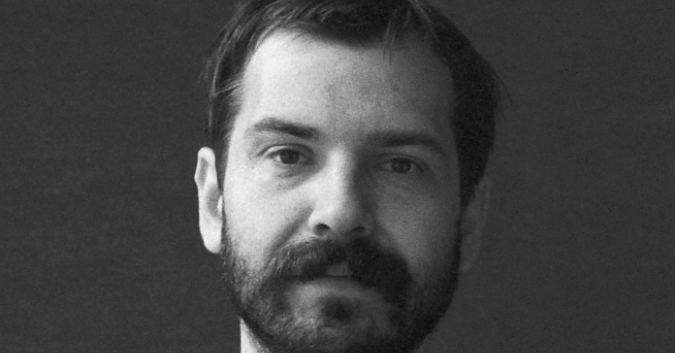In the late 1980s and early ’90s, Lutterer roamed the outskirts of Prague with a 100-plus year old Kodak Panoram 6×18 cm camera whose swinging lens enabled him to take panoramic photos 140 degrees in scope. The camera did not have a focus mechanism or a viewfinder. In other words, Lutterer couldn’t focus on any single object.
The resulting panoramas are broad in scope but not selective in details. They show the big picture, but they don’t tell the viewer what the artist wants them to see. Lutterer doesn’t present a case, but merely an assortment of facts, thus allowing the viewer to reach his own conclusions.
The effect is all the stronger.
Take his photograph of the chateau-turned-agricultural-cooperative in Klášterní Skalice. Glassless windows stare blindly out of the crumbling facades at a courtyard crisscrossed by chain link fencing and cheap greenhouses. Only a line of pristine pillow cases brings domestic order to the ruin. In the lower left corner, a little boy stands next to a wooden wagon behind one of those fences, gazing wistfully at children playing two yards – it might as well be two worlds – away.
(Note: click on the images below for larger versions)
Another titled only “Císařská louka 1976” (Emperors’ Field 1976), shows an abandoned shack on the bank of the Vltava. The view from the porch is marred by scrawny willow trees. Heaps of rotting grass, washed up by spring overflow, line the walls. In front, the prow of a boat sticks helplessly out of the water. In the distance looms a steel bridge. It is up to the observer to realize that the Císařská louka was a river island built at great expense as a weekend destination for the citizens of Prague, or to decipher a sign on the wall: the shack was once a ferry station. Both it and the boat have been rendered useless by the bridge.
Lutterer favored the “unpretty” face of Prague: miles of corrugated steel fences ringing abandoned factories or drab lines of passengers crowding on the platforms in the pit of the Florenc bus station on the day before Christmas.
“I would like to photograph the everyday Czech life at its most ordinary, the universal mediocrity and the grayness which, for me, are what life is about here. History permeating the present and vice versa, the city, the land, the people…,” he wrote in his diary in 1987.
And yet, in the eerie glow of a lamp behind a corrugated fence, he finds beauty.
Or in the chaos of flowers, vegetables, and fruit overwhelming a rickety, vinyl-covered table in a cottage garden.
And some photos are unapologetically breathtaking.
Born in Prague in 1954, Lutterer graduated from the Academy of the Film and TV School (FAMU) where he specialized in art photography in 1979 and later worked as a freelance photographer.
His friends respected him for his modesty and his perception.
“He was different from his contemporaries who were more aggressive, more documentary, even political. He wasn’t into that,” said photographer Pavel Banka.
This is not to say that Lutterer was not capable of cutting documentary photography. On the night of December 31, 1981, he took to the streets to capture his fellow countrymen in their revels, and the results are not flattering.
In one particularly terrifying photo, a fluffy white Spitz prances in a crosswalk, alone and unsuspecting of danger.
The resulting series, titled “Silvestr,” is a scathing indictment of the society he lived in. Too scathing for the gentle Lutterer, perhaps.
“It surprised all of us,” says Banka. “He never went back to it.”
In addition to his own prolific photography, Lutterer preserved old photographs, using techniques and technology he’d developed himself. From 1999 to 2000, he worked to preserve a treasure trove of daguerreotypes from the interwar period, discovered in the Langhans atelier in Prague.
The work consumed him.
“I was bowled over by their technique,” he says in a taped interview, running at the UMPRUM exhibit. “Not many people know how difficult it is to work with daylight – how changeable it is. They had it figured out perfectly.”
For over a year he immersed himself in the work.
“The moment I start thinking about the amount of time I’ve spent on a photo, it stops making sense. I have to work on each one until I’m completely satisfied …. The energy you put into it will show in the end, just as the energy of the people that originally made them.”
In 2000, he got a research grant at the George Eastman House in Rochester, New York – a mistake. On November 11, 2001, exactly two months after the attacks on the World Trade Center, Ivan Lutterer disappeared from our picture.
After his death, his life’s work was nearly wiped out by the floods of 2002, when the Vltava flooded his atelier in Karlín. His friends saved his negatives and in 2014 his parents donated some 10,000 negatives and prints to the UMPRUM in Prague.
“He had no reason to draw attention to himself, nor did he try,” said his friend and curator of the present exhibition Jaroslav Bárta. “He was acutely aware of all the things that seemed to be at the periphery, but are actually the point. Thus he was able to reveal the fragile, hidden associations to create a larger meaning.”
**
Inconspicuous Connections, a posthumous exhibition of the photographs of Ivan Lutterer (1954-2001), considered to be one of the most significant photographers of his generation, will run through June 15, 2014 at the Museum of Decorative Arts (UMPRUM).











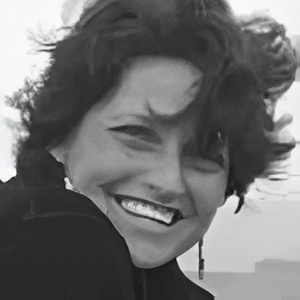
 Reading time: 4 minutes
Reading time: 4 minutes 



